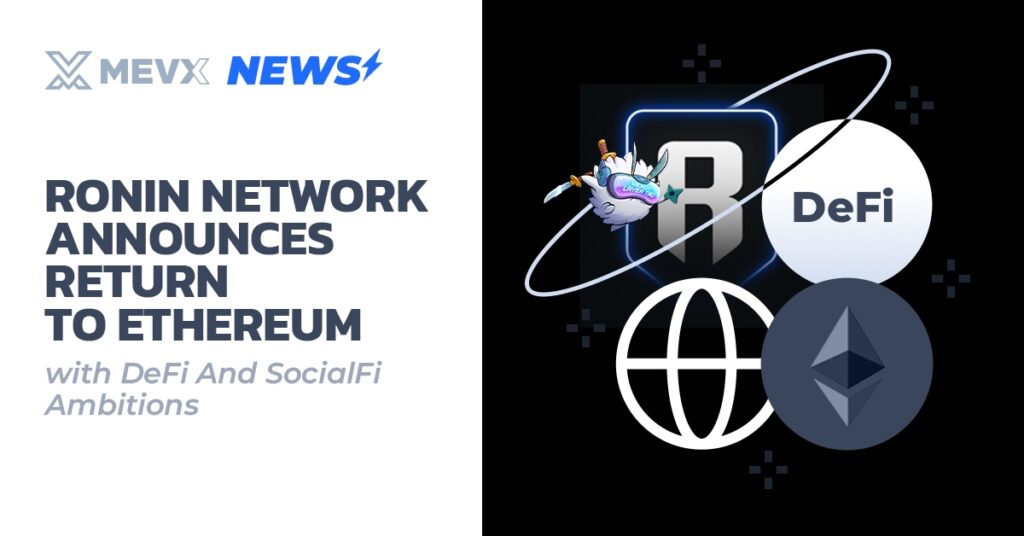TLDR:
- Development: Ronin Network, which developed Axie Infinity, announced on August 16, 2025, that it will shift back to Ethereum as a layer-2 network in the second quarter of 2026, taking advantage of improved performance and institutional acceptability of Ethereum.
- Narrative: Beginning as one blockchain for gaming, Ronin will become a chain of tokenized, generalized assets, SocialFi, and DeFi, leveraging Ethereum’s Wall Street moment strength to fuel the transformation of the Web3 universe, competing with Solana’s thriving ecosystem.

The Ronin Network, the backer of play-to-earn game Axie Infinity, on August 16, 2025, revealed that it will rejoin the Ethereum ecosystem as a layer-2 network in the second quarter of the calendar year 2026, in a noteworthy shift of direction away from its standalone layer-1 launch in the calendar year 2021. Spurring the move are the quicker transaction speeds, virtually zero gas fees, and increasing appeal of Ethereum to investors on Wall Street, which could see Ronin look beyond gaming to decentralized finance (DeFi), SocialFi, and tokenized collectibles. “Ethereum is back. Transaction speeds and costs are better than ever. We’re early to the next age of growth, and Ronin is ready to rise,” said the Ronin team, in announcing their plans to capitalize on the rejuvenated ecosystem of Ethereum.
It was bifurcated from Ethereum in 2021 to escape astronomical gas fees and sluggish transactions, so Axie Infinity’s gameplay as NFTs could thrive with more than $4.2 billion in trading volume, according to GAM3S.GG. The upcoming migration, to be deployed in two phases, leverages the zkEVM tech of Polygon to facilitate 5,000 transactions per second and frictionless interoperability with Ethereum. That is just fine by Ethereum’s recent price boost to $4,790, fueled by institutional demand appetite by Ether treasure firms sponsored by the Ethereum Foundation’s Etherealize initiative launched in January 2025. The U.S. bill banning yield-bearing stablecoins in the GENIUS bill has also enticed investors to Ethereum’s DeFi and staking rewards, causing the platform to be a well-liked home base for Ronin’s ambitious Web3 plans.
Its migration envisions a Proof of Distribution (PoD) framework that will reward active builders like Pixels and Moku, and will strive to make Ronin the go-to hub for different use cases.
Share on Social Media:
